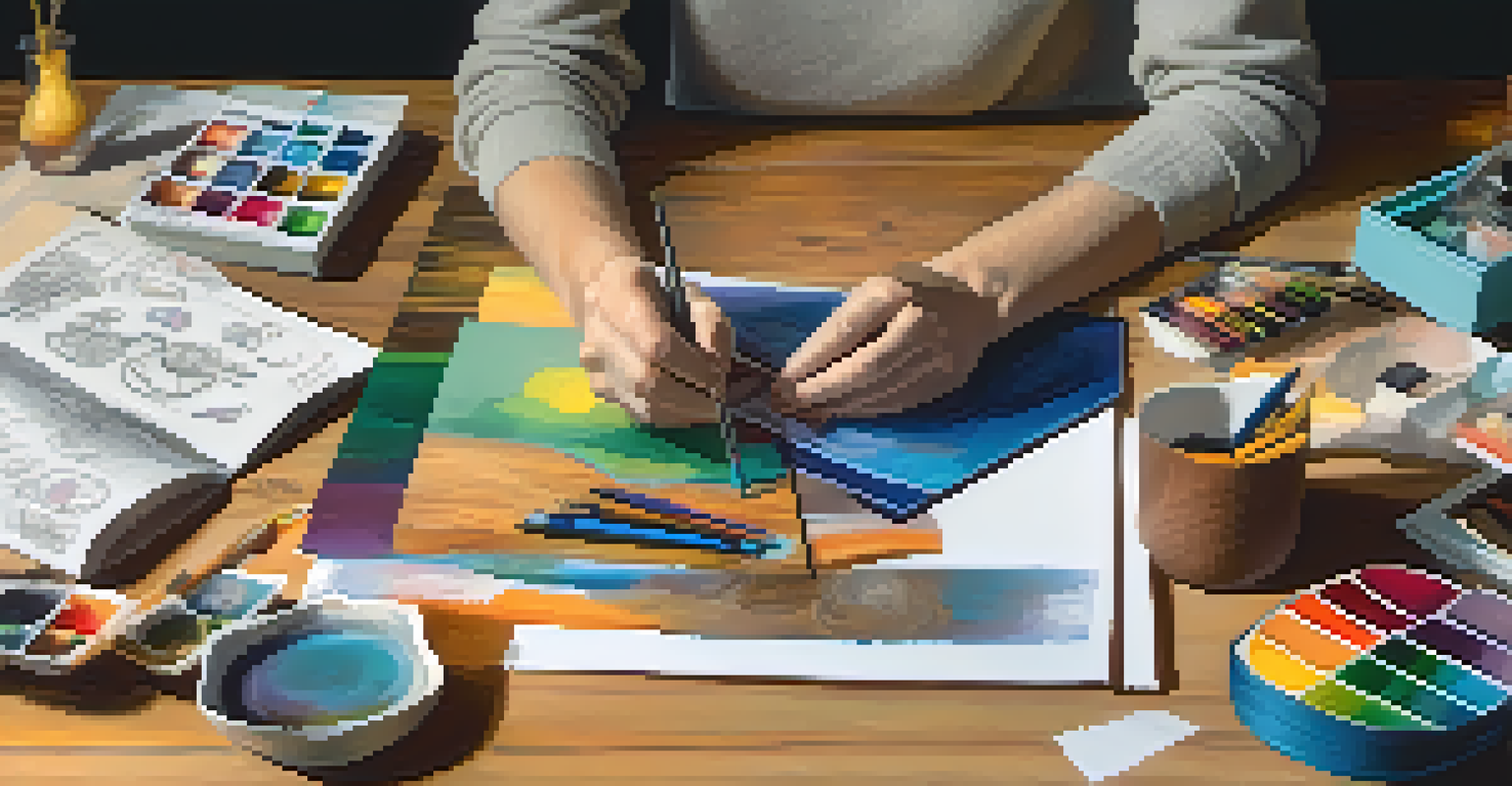Creating a Portfolio that Reflects Your Unique Style

Understand the Purpose of Your Portfolio
Before diving into the creative process, it's crucial to understand what you want your portfolio to achieve. Is it to attract potential clients, showcase your skills, or land a job? Knowing your goal will guide your choices and help you present your work in a way that resonates with your target audience.
Your portfolio is a reflection of your brand, so make sure it represents you well.
Think of your portfolio as a personal brand statement. It should not only showcase your best work but also communicate your unique perspective and style. This clarity will also make it easier to decide what pieces to include, ensuring that each one serves a purpose.
Ultimately, a well-defined purpose allows your portfolio to tell a cohesive story about who you are as a creator. This narrative will engage viewers and encourage them to consider how your style aligns with their needs.
Select Your Best Work Strategically
Choosing the right pieces for your portfolio is like curating an art exhibit; it’s about quality over quantity. Aim for a diverse selection that highlights your skills while reflecting your unique style. A smaller number of exceptional pieces can often leave a stronger impression than a larger collection of mediocre works.

Consider the audience for your portfolio when selecting pieces. For example, if you are targeting a specific industry, include work that aligns with that field. This tailored approach will demonstrate your relevant experience and help viewers envision how you can contribute to their projects.
Define Your Portfolio's Purpose
Understanding the goal of your portfolio helps you curate work that resonates with your target audience.
Finally, don’t hesitate to remove older work that no longer represents your current style or skill level. Your portfolio is a living document and should evolve along with you, ensuring that it always reflects your best self.
Create a Cohesive Visual Aesthetic
Visual consistency is key when creating a portfolio that captivates your audience. Choose a color palette, typography, and layout that not only reflect your style but also enhance the viewer's experience. This cohesive aesthetic will help your work shine and keep your audience focused on what matters most: your creations.
The best way to predict the future is to create it.
Think about how each piece interacts with the others. For instance, if you’re showcasing photography, consider how the images work together in terms of color and theme. A well-organized layout can create a narrative flow that guides viewers through your work seamlessly.
Ultimately, a cohesive visual aesthetic strengthens your brand identity. When your portfolio feels unified, it leaves a lasting impression and communicates professionalism, making potential clients more likely to engage with you.
Tell the Story Behind Each Piece
Every piece in your portfolio should come with a story that explains its context and your creative process. Sharing insights about what inspired you, the challenges you faced, and how you overcame them can engage your audience on a deeper level. This storytelling element adds a personal touch that makes your work more relatable.
For example, if you're showcasing a graphic design project, consider including a brief description of the client’s goals and how you met them. This not only highlights your problem-solving skills but also demonstrates your ability to collaborate effectively.
Showcase Your Best Work
Selecting high-quality pieces strategically demonstrates your skills and unique style, making a stronger impact.
Incorporating these narratives turns a simple portfolio into a more dynamic experience. Viewers are more likely to remember your work—and you—when they understand the thought and effort behind it.
Incorporate Personal Projects
Personal projects are a fantastic way to showcase your unique style and creativity. They often allow you to explore concepts that may not fit within client work, giving you the freedom to experiment and push boundaries. Including these pieces demonstrates your passion and commitment to your craft.
Additionally, personal projects can highlight skills that may not have been showcased in previous client work. For instance, if you’re a designer who loves illustration, including a personal project that showcases this talent can attract attention from potential clients who appreciate that skill.
Ultimately, personal projects add depth to your portfolio. They convey your interests and values, making it easier for viewers to connect with you on a personal level.
Showcase Client Testimonials and Feedback
Including testimonials and feedback from clients can add significant weight to your portfolio. These endorsements not only validate your skills but also provide social proof that you can deliver quality work. Potential clients are often more likely to trust the opinions of others rather than just your self-promotion.
Consider incorporating quotes or short reviews alongside relevant pieces in your portfolio. This approach not only highlights the project but also emphasizes the positive impact of your work on clients’ businesses. It's a win-win for both you and your audience.
Keep Your Portfolio Updated
Regularly refreshing your portfolio ensures it reflects your current skills and showcases your growth as a creator.
Moreover, testimonials help to humanize your portfolio. When potential clients see that others have had positive experiences working with you, they may feel more comfortable reaching out and starting a conversation.
Keep Your Portfolio Updated Regularly
A portfolio is not a one-time project; it requires regular updates to remain relevant and reflective of your current skill set. As you complete new projects or develop new skills, take the time to refresh your portfolio. This practice ensures that you are always showcasing your best work.
Beyond just adding new pieces, consider reassessing older work as well. If something no longer feels aligned with your style or capabilities, don’t hesitate to remove it. An updated portfolio communicates that you are actively engaged in your field and committed to your growth.

Regular updates also give you the chance to reflect on your journey as a creator. By looking back at how far you’ve come, you can better appreciate your unique style and identify areas for future development.